Does it really work?
Well, judge for yourself. I reckon it's pretty good and certainly better than most alternatives at little expense.
Each example includes three images:
- The raw images directly from the microscope
- the automated analysis
- and finally, the user amended count, where I've added or removed cells, as I see fit, for a final count
As well as being a work in progress, there are parameters which can be specified to improve the analysis of a specific image type. The image type is driven
by the hardware - microscope, camera and given focus. I believe these examples are broadly representative of accuracy & precision, but more samples are necessary.
Moreover, improvements are possible.
Example 1 - not a lot of yeast
You'd want to count 100+ cells to have a statistically significant count. You could take one or two more images from this dilution.
1 / 3
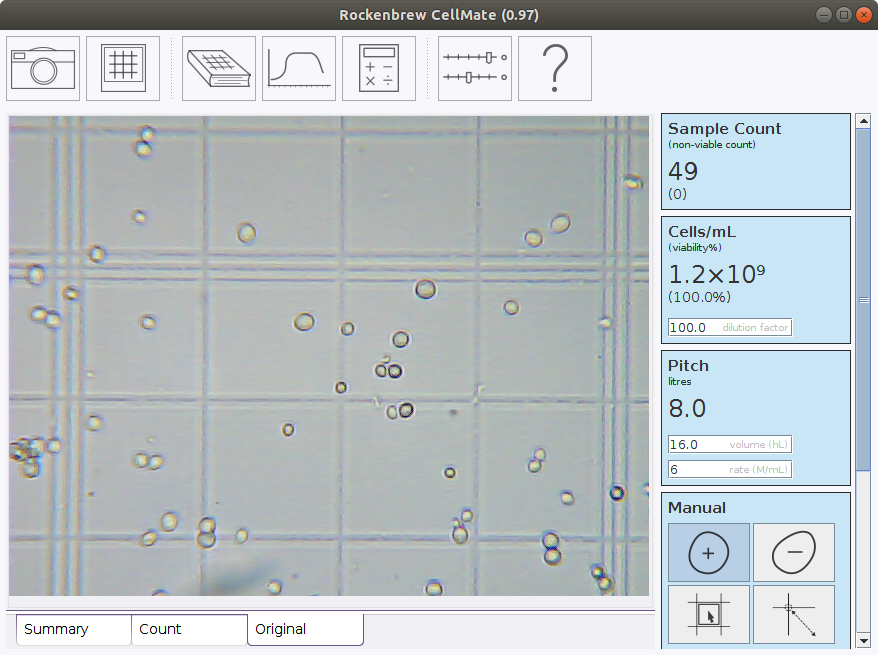
Raw Image
2 / 3
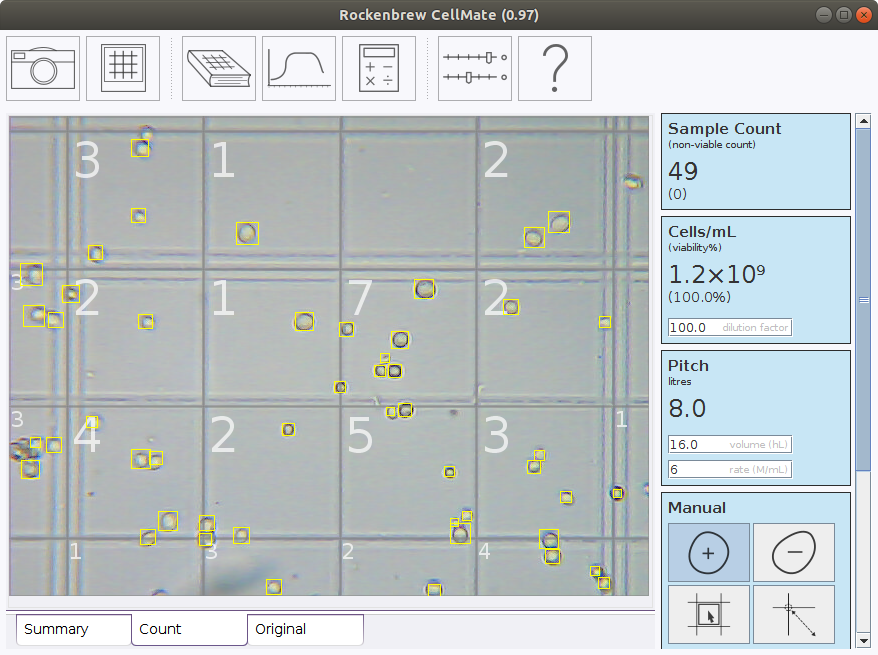
Automated Analysis
3 / 3
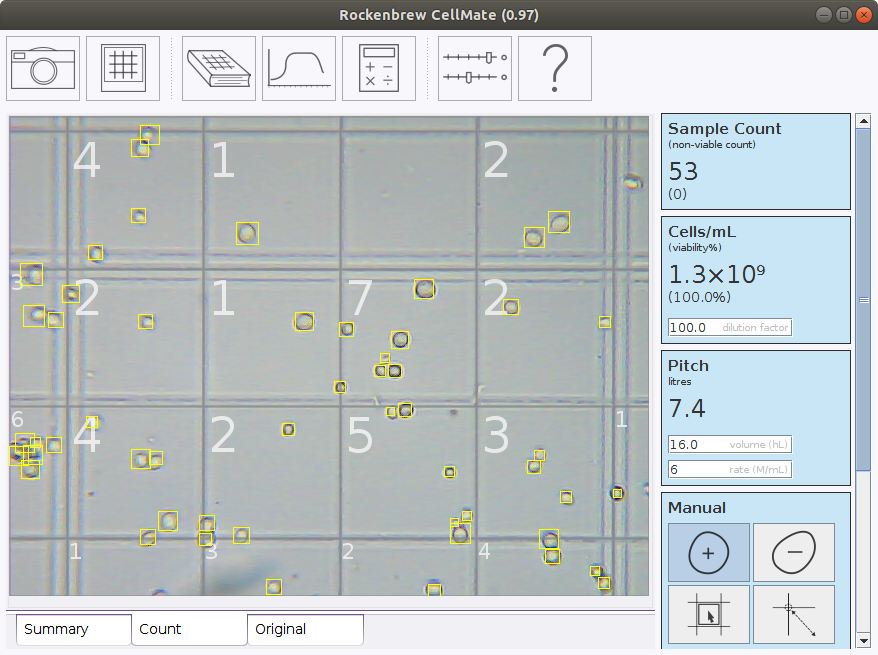
User Amended Image
❮
❯
| auto. count |
added |
removed |
final |
net chg. |
error rate |
| 49 |
4 |
0 |
53 |
+4 |
7.5% |
Hardware: Hobby microscope + 0.3MP camera
Sample: Baking yeast (Saccharomyces Cerevisiae)
Notice that this camera only focuses correctly in the centre/centre-right of the image. You get what you pay for. That said, it still works for the most part.
Example 2 - a lot of yeast
1 / 3
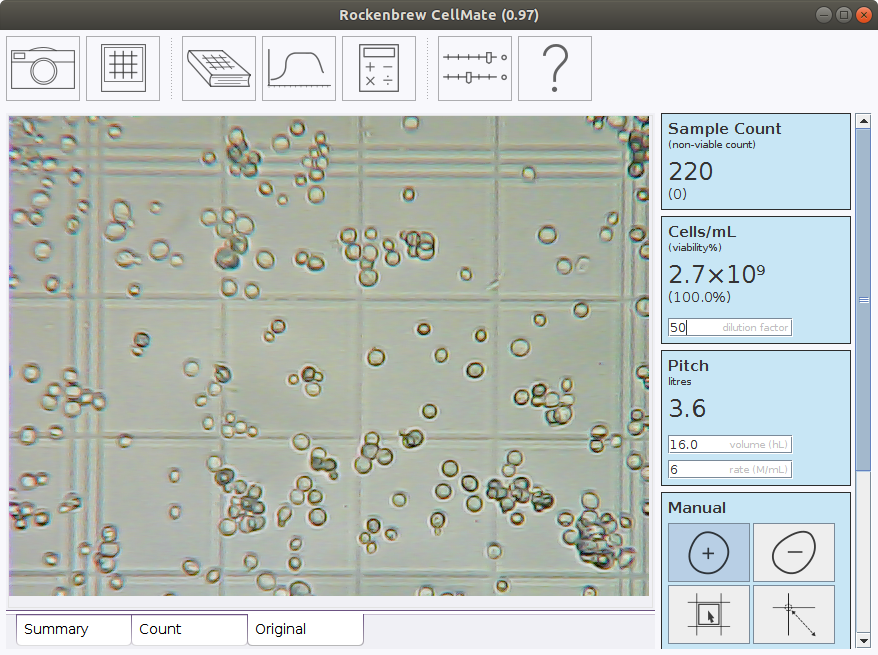
Raw Image
2 / 3
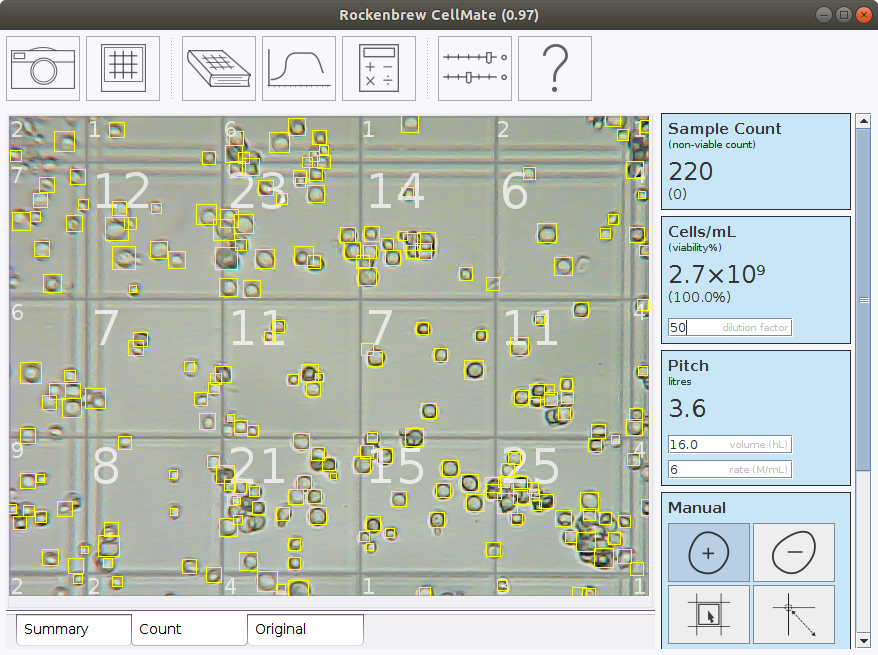
Automated Analysis
3 / 3
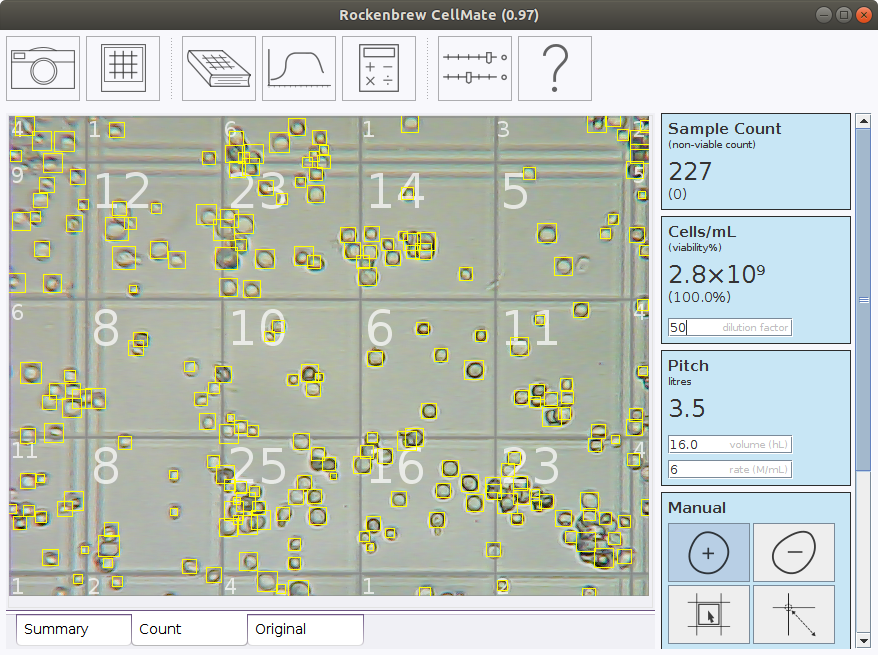
User Amended Image
❮
❯
| auto. count |
added |
removed |
final |
net chg. |
error rate |
| 220 |
18 |
11 |
227 |
+7 |
3.08% |
Hardware: Hobby microscope + 0.3MP camera
Sample: Baking yeast (Saccharomyces Cerevisiae)
We can nitpick about which blobs are cells and which are just blobs, but roughly, we've got 2.7 billion cells/mL. For a desired pitch rate of 6 million cells/mL into 16hL
(1600L or 10 Brewer's Barrels (BB)) of wort, we should pitch about 3.5L of the original slurry.
Example 3 - something borrowed
This image isn't mine. I've borrowed it from Manzanita Brewery (a little way out from San Diego) care of a blog called 40 Liter Starter by a
chap called Matt. Incidentally, Matt's blog post here is a very interesting example of cell counting in practice.
In hindsight, maybe, they should have under pitched as best they could and topped up with dry yeast. Better still, check the yeast earlier in the day - not always practical, I know.
1 / 3
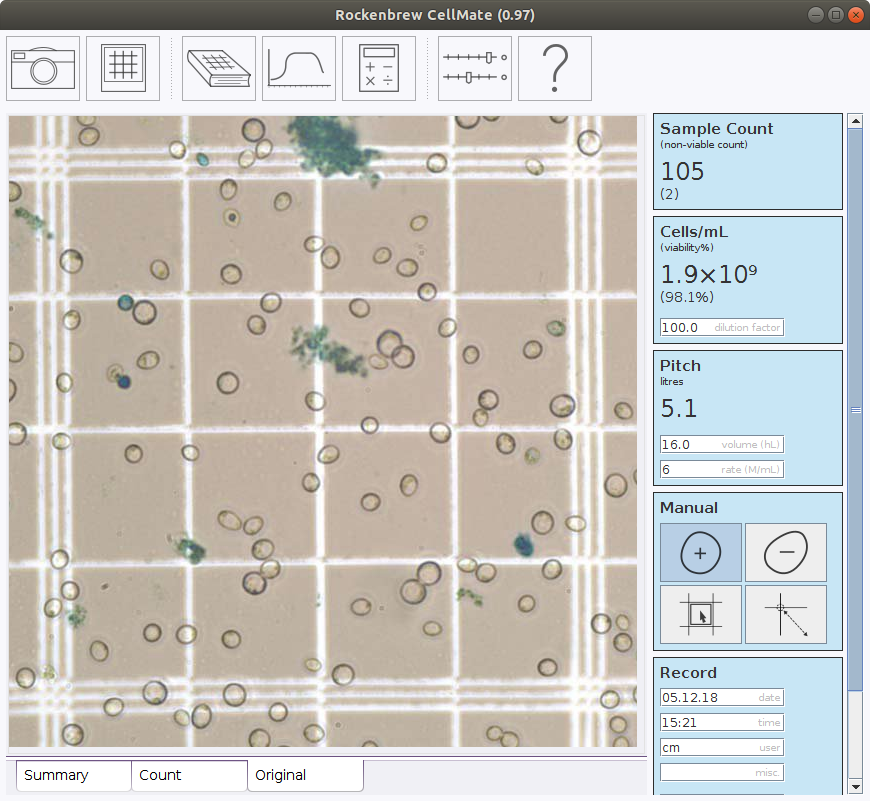
Raw Image
2 / 3
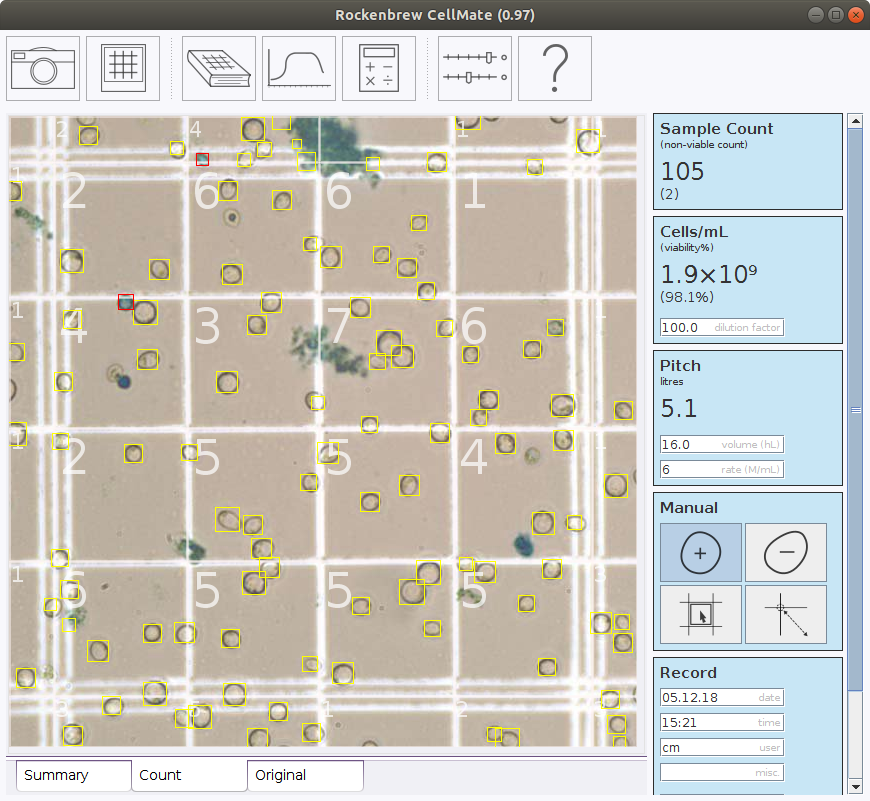
Automated Analysis
3 / 3
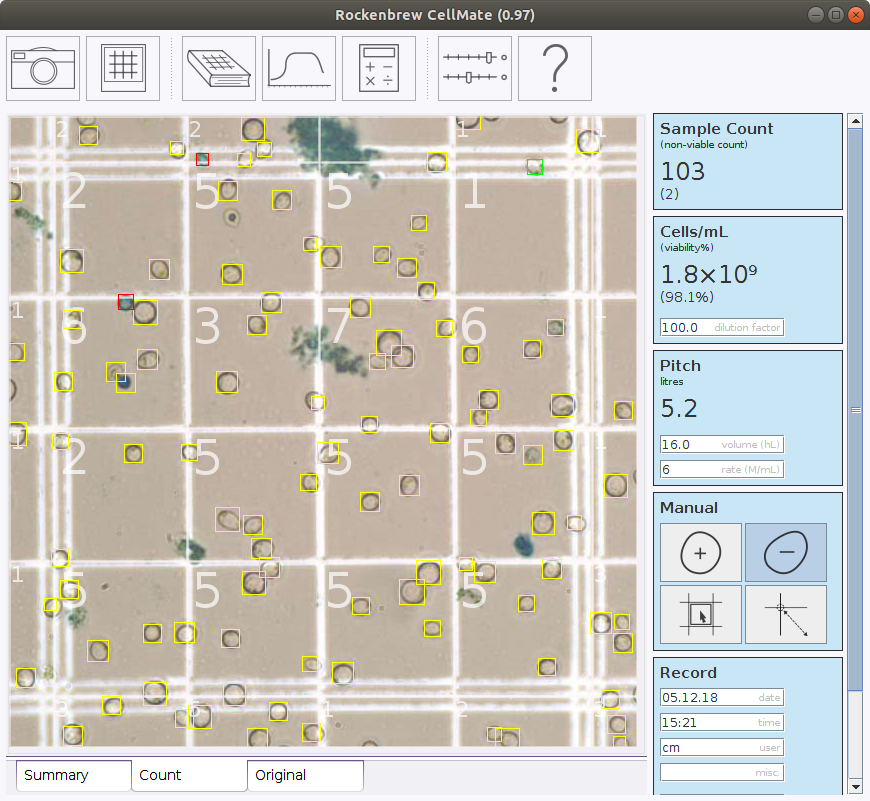
User Amended Image
❮
❯
| auto. count |
added |
removed |
final |
net chg. |
error rate |
| 105 |
3 |
5 |
103 |
-2 |
-1.94% |
Hardware: Unknown, but it looks like good kit to me. You'd have to ask at
Manzanita Brewing.
Sample: Unknown brewers yeast
The extraneous (hop/protein/dead cell) matter is the obvious issue here. It creates an over-count, but this is easily removed manually. I'll look into potential auto-count improvements here.
Note the mother and budding daughter cell, (left hand side). At this budding stage, the daughter is too busy to reduce the dye, so appears non-viable, but she'd be fine, (if not for the toxic dye).








